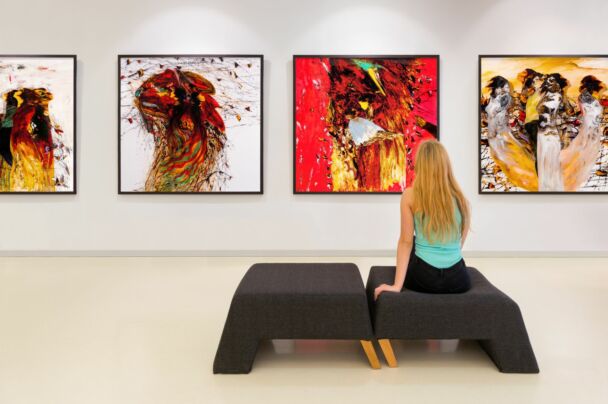Description
An always-increasing number of schools across Europe are acknowledging the advantages of integrating Mindfulness practices about focus, concentration, and relaxation in their educational programs.
And with good reasons: several studies have shown that practicing mindfulness increases one’s resilience towards challenges, and reduces stress and anxiety.
Moreover, it prevents aggressive behavior and bullying while boosting concentration and improving academic performance in students of all ages and levels.
Nevertheless, introducing Mindfulness to a new school audience can be difficult as students and teachers might think they are not able to maintain their focus long enough or perhaps misperceive mindfulness as a form of religious practice.
The course will show how to make Mindfulness more appealing in a school setting by proposing its practice in the context of art observation.
Like Mindfulness, Visual Arts are a great resource in educational programs. They can also foster social-emotional skills, emotional health, and well-being. Additionally, they can help teachers develop captivating learning activities and have been successfully included in various programs to support students with learning disorders.
Why not merge mindfulness and art observation in the same learning activity, then?
The course will demonstrate the fascinating merge between mindfulness and visual arts, learning to practice mindfulness to fully experience art masterworks directly in art museums.
Participants will first learn about the most interesting mindfulness programs currently used in schools and discover how to introduce children and teens to mindfulness practice with playful and imaginative visual-based activities.
Hence, they will feel ready to enter a museum and practice mindfulness there, unleashing their own creativity while being inspired by art observation.
Participants in the course will visit a local art museum, and learn to look – and make their pupils and students similarly look – at the museums with fresh new eyes, unveiling its potential as a truly dynamic learning environment.
By the end of the course, participants will have all the required expertise to bring mindfulness to their schools through art observation. They will feel ready to engage students in playing mindfulness activities, thereby supporting both their emotional health and academic accomplishment.
Bibliography
- Hesemans, H. (2017). Mindfulness At The Museum. How Aesthetic Experiences In The Art Museum Might Benefit From Mindfulness. 10.13140/RG.2.2.32662.14408.
- Mangione, S., Mockler, GL., Mandell, BF.. The Art of Observation and the Observation of Art: Zadig in the Twenty-first Century. J Gen Intern Med. 2018 Dec;33(12):2244-2247. doi: 10.1007/s11606-018-4666-5. Epub 2018 Sep 17. PMID: 30225766; PMCID: PMC6258622.
- Stonehocker, S., Robinson, L., Wood K., & Brett-MacLean, P. (2015). The Art Of Observation: Learning To See. University of Alberta Health Sciences Journal. 11. 23-24
What is included
Learning outcomes
The course will help the participants to:
- Successfully introduce mindfulness practices in their schools;
- Understand the benefits of art observation in the classroom for enhancing emotional awareness and creativity;
- Use mindfulness practices inspired by art observation to develop focused attention and general well-being;
- Turning art museum visits into mindful experiences.
Tentative schedule
Day 1 – An introduction to mindfulness and art in educational settings
- Welcome and icebreaking activities;
- Introduction to the course and the week’s activities;
- Presentations of the participants’ schools;
- Mindfulness in educational settings;
- Arts in educational settings.
Day 2 – Discovering the power of art observation
- Art as a tool for promoting well-being;
- The Art of Observing: enhancing self-awareness and creativity;
- The Art museum as a dynamic learning environment;
- Practicing your own observational skills through the visit to a local Art museum.
Day 3 – Exploring the benefits of mindfulness
- The benefits of Mindfulness: in and outside school;
- First practical Mindfulness session;
- Mindfulness programs in Schools: a main overview;
- Merging Mindfulness and Art with a creative and playful approach.
Day 4 – Mindfulness at the museum
- How to turn a museum visit into a mindful experience;
- Practical mindfulness session in a local Art Museum;
- Getting inspiration from the art collection: Designing an activity for your students.
Day 5 – What’s your idea?
- Mindfulness and Art Observation in the Classroom: useful tools and resources for kids and teens;
- Designing an action plan for your school;
- Presenting your project.
Day 6 – Course closure and cultural activities
- Course evaluation: round-up of acquired competencies, feedback, and discussion;
- Awarding of the course Certificate of Attendance;
- Excursion and other cultural activities.







